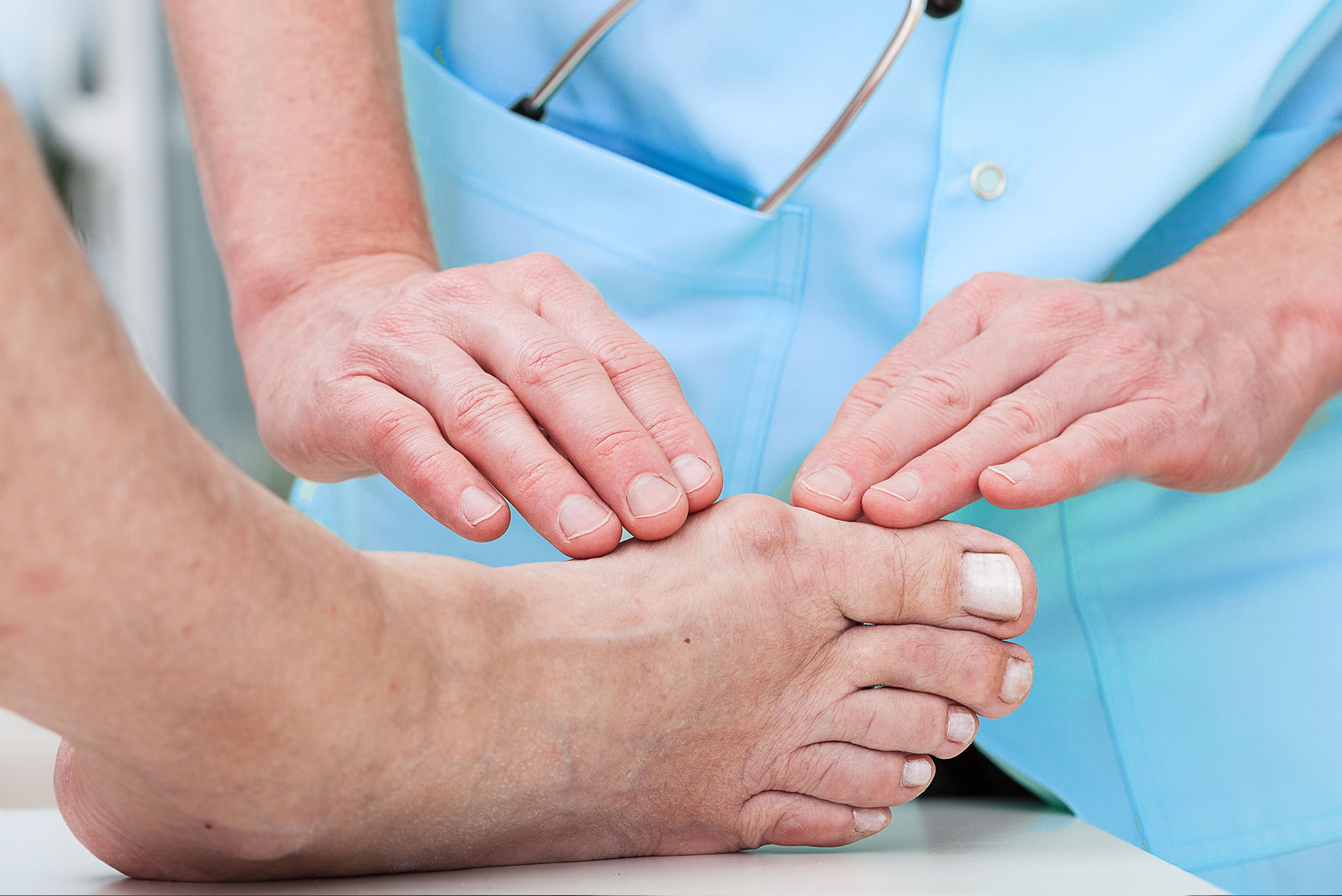Same day appointments, walk in clinic
Same day appointments, walk in clinic

Bunions and hammertoes can be treated both conservatively and surgically. It all depends on what Dr. Taub and the patient wants to accomplish.
One of the most common foot problems seen by podiatrists is a bunion. Typically recognized as an unsightly bump at the base of the big toe, a bunion is actually a deformity of the framework of the foot. It develops when the joint at the base of the big toe becomes unstable, causing both the bone and soft tissues to move out of place. The bunion’s characteristic bony knob appears on the foot just behind the big toe and angles outward as the big toe angles inward toward the smaller toes. Occasionally, a bunion may develop at the base of the little toe on the outside of the foot. This is known as a tailor’s bunion or bunionette.
Foot mechanics that put too much pressure on the big toe joint may be the reason behind the development of bunions. Factors such as gait, inherited foot type, wearing ill-fitting or poorly designed footwear, as well as having an occupation that puts a lot of stress on the feet can increase the risk that a bunion will form. Individuals affected by injuries to foot alignment, neuromuscular disorders, congenital deformities, or joint conditions are also more likely to develop bunions.
Without the appropriate podiatric care, a bunion can widen the foot, make wearing shoes more difficult and impair daily function. A shifting big toe can put so much pressure on the smaller toes, that they too develop abnormalities. Moreover, the toe joint damage associated with a bunion can cause stiffness, bursitis, or arthritis and give rise to additional complications.
Our podiatrist will evaluate your bunion and develop an appropriate treatment plan. If non-surgical, conservative methods of care fail to provide relief, and the bunion is interfering with your daily life, our podiatrist may recommend a surgical procedure.
One of the most common toe deformities seen by our office is a hammertoe. Most often attributed to wearing ill-fitting, tight footwear or high-heeled shoes that squish the toes into a bent position, a hammertoe can also be influenced by genetic factors, the result of a bunion, or caused by arthritis in the toe joint.
Just as the name implies, a hammertoe resembles a “hammer” with the toe bending at the middle joint into a claw-like deformity. Hammertoes can develop in any of the small toes of the foot, but most often affect the second and third toes. Hammertoes usually affect women, but men can develop them as well.
Hammertoes can cause you discomfort while walking or when you simply try to move or stretch your toes. You may also develop corns or calluses on the top of the toe and the ball of the foot and have difficulty fitting into your shoes.
While in the early stages of a hammertoe, the joint may still be flexible and conservative therapy will provide sufficient relief, left untreated your toe will become more rigid and less responsive to these methods of care.
Our podiatrist will develop an appropriate plan to treat your hammertoe, taking into consideration the severity of the toe deformity, existing medical conditions, your level of activity as well as any other factors that may influence your care. A non-surgical, conservative approach may include strategically placed foot padding, wearing shoes with a roomy toe box, custom orthotics, splinting and taking anti-inflammatory medication as needed to reduce pain and inflammation. In severe cases, surgery may be required to straighten the joint. A combination of procedures may be recommended when a hammertoe is accompanied by other foot deformities.
